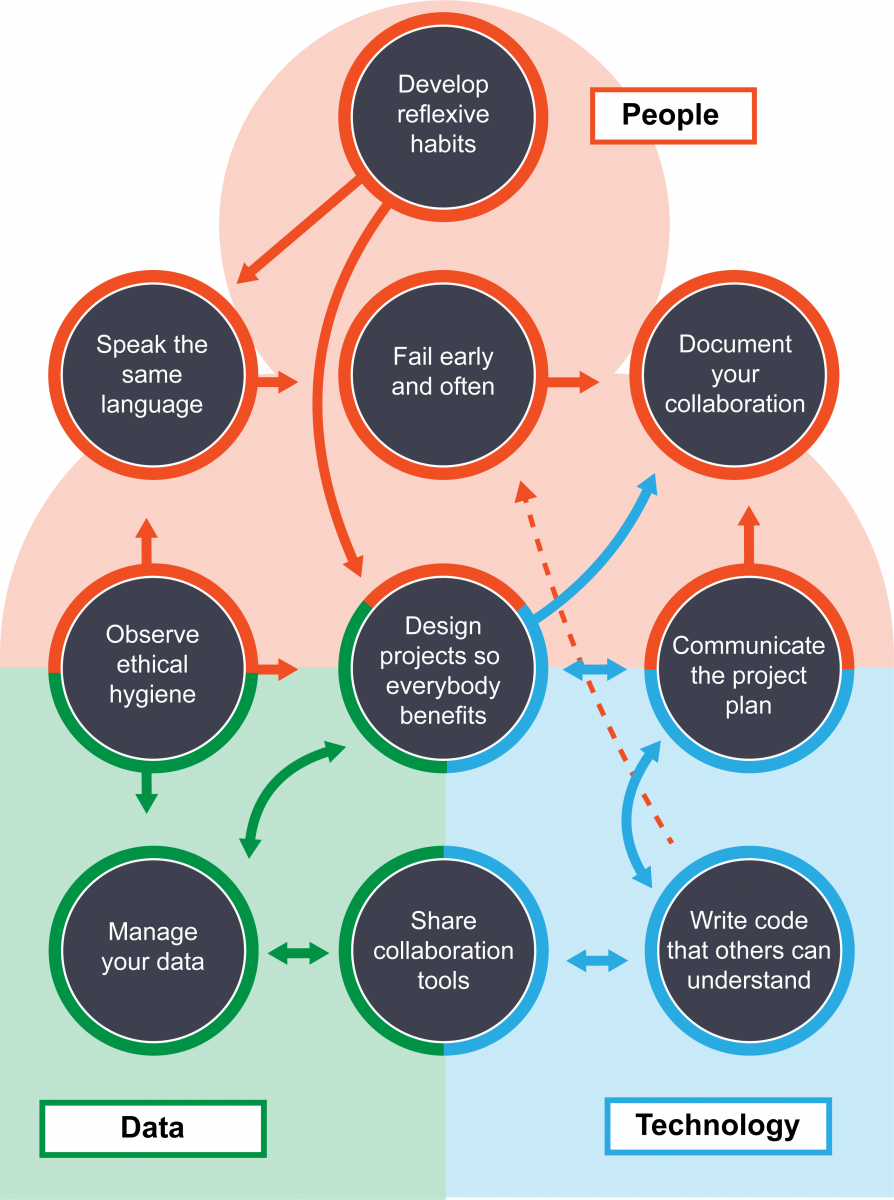Leah Pistorius
June 15, 2021
David Ribes, an associate professor in Human Centered Design & Engineering, and Will Sutherland, a PhD student in Human Centered Design & Engineering, are co-authors on a new paper about how to support transdisciplinary work in data science. The paper highlights facilitating collaboration, but not replacing the societal function of successful research.
Ten simple rules to Cultivate Transdisciplinary Collaboration in Data Science is published in the journal PLOS Computational Biology. The collaborative paper includes 33 co-authors that span scientific disciplines. Find the full list of authors here.
From the paper:
“Despite the tremendous advances in data-driven platforms, technologies, and analytical tools designed to ease collaboration between researchers and data scientists, very little attention has been devoted to understanding or developing the culture of collaboration—i.e., how interpersonal dynamics between research professionals drive collaboration and the institutional roles that sponsors, universities, and experts play in the coproduction of knowledge. “Collaboratory cultures” is a people-first structure in the research ecosystem and necessary to support the next wave of data-driven “transdisciplinary” research. Individuals who possess the skills to lead transdisciplinary projects and the savvy to negotiate collaboratory cultures will be the most effective at advancing their research agendas.
This article is the result of the 2019 Lemon Labs workshop, where the authors of this article shared their collective experiences on a wide range of data-driven science issues. This “visioning lab” event provided an open, inviting space for participants to share the challenges they face in their own collaborative projects. Lessons learned were summarized and developed into the following interconnected Ten Simple Rules within a “collaboratory cultures” framework.
How the rules work together and intersect. There are multiple components in collaborations: person–person interactions, person–technology interactions, person–data interactions, and data–technology interactions. Synergy between these components results in a successful collaboration. https://doi.org/10.1371/journal.pcbi.1008879.g001.
We provide guidelines for investigators who have the need for and the interest in a new collaboration but do not know how to get started, as well as for those already starting collaborations but do not know how to structure newly formed teams in a way that will produce the desired outcome.”
Read the full paper on the PLOS Computational Biology website.
